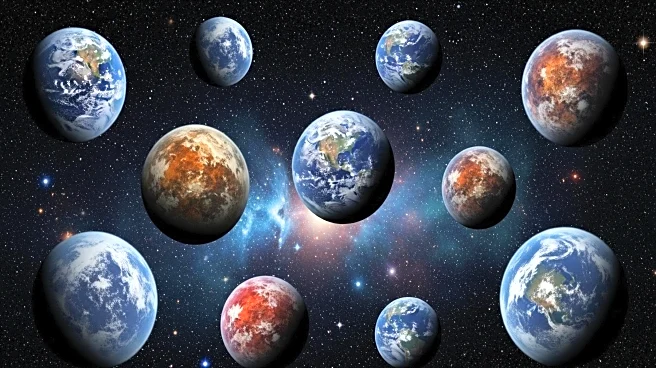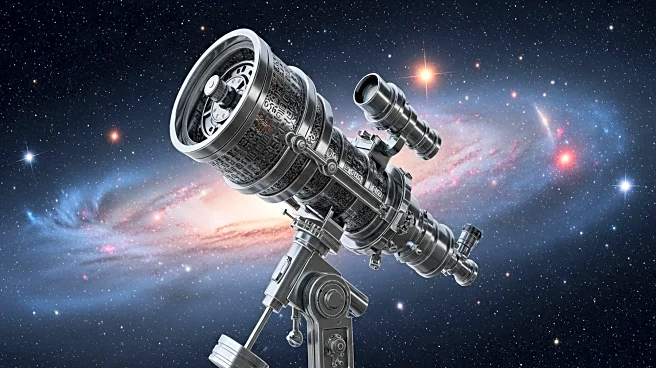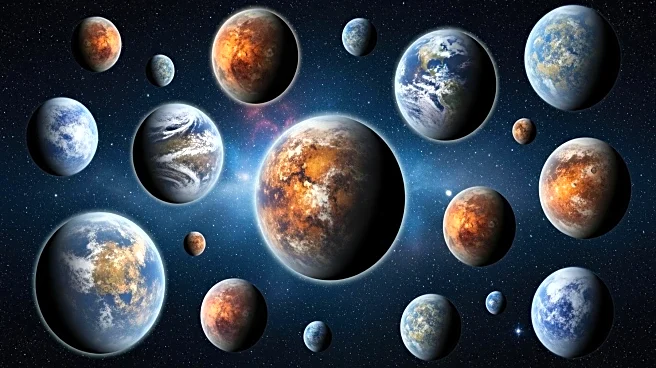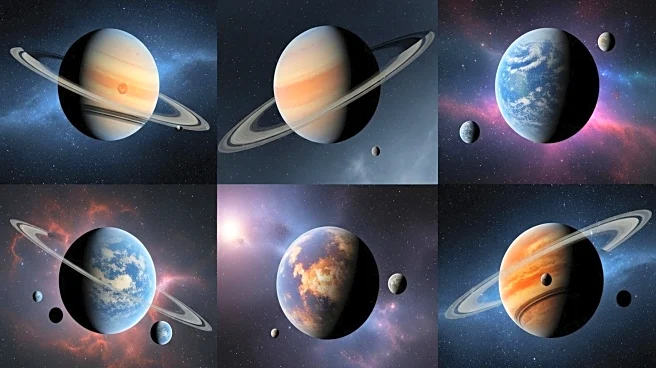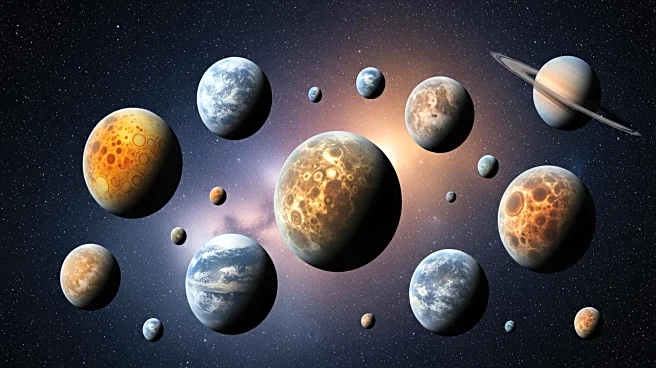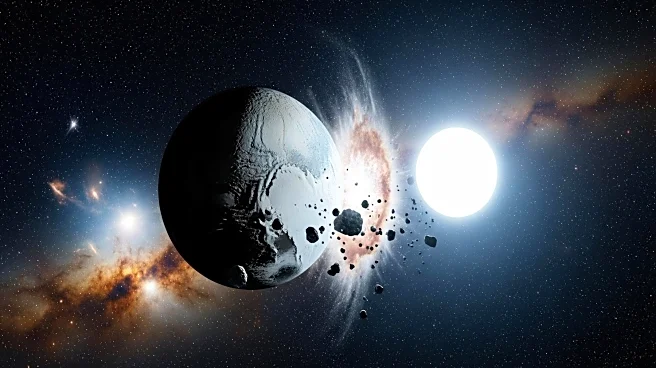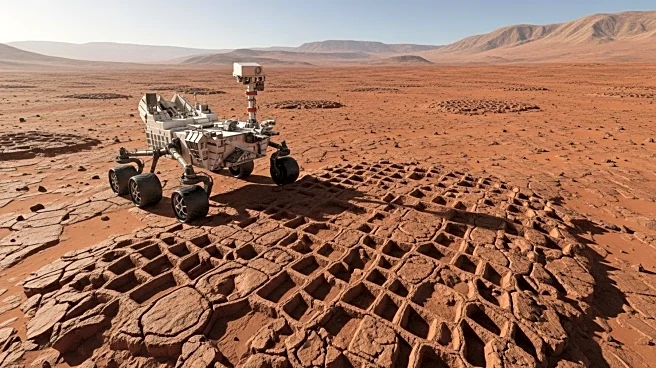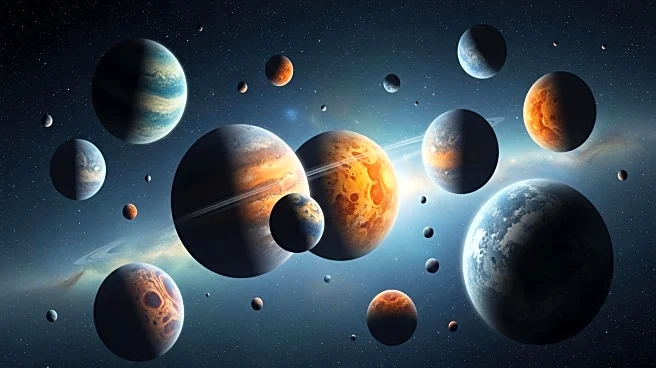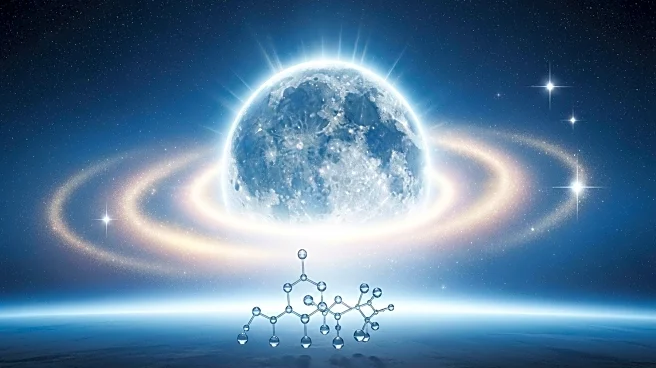What's Happening?
A recent study led by Caroline Dorn from ETH Zürich suggests that sub-Neptune planets, previously thought to be potential 'water worlds,' may not have significant oceans. These planets, larger than Earth but smaller than Neptune, were believed to form far from their stars, accumulating ice that could melt into oceans as they migrated inward. However, the study indicates that chemical interactions between magma and the atmosphere sequester water deep within the planet's interior, leaving only a small percentage of water near the surface. This challenges previous assumptions about the existence of Hycean planets, which were thought to have vast oceans beneath hydrogen-rich atmospheres.
Why It's Important?
The findings have significant implications for astrobiology, as they suggest that the most promising environments for liquid water and potentially life may be smaller, rocky planets similar to Earth, rather than the larger sub-Neptunes. This shifts the focus of the search for extraterrestrial life and habitable planets. The study also suggests that Earth may not be as unique as previously thought, with many distant planets having similarly modest traces of water. This could influence future research and exploration strategies in the search for life beyond our solar system.
What's Next?
The study's results may lead to a reevaluation of targets for future space missions and telescopic observations, focusing more on smaller, rocky planets. Scientists may also continue to study sub-Neptune planets like K2-18b to understand their formation and characteristics, which could provide insights into planetary system evolution. The findings could prompt further research into the chemical processes that affect water distribution on these planets.
Beyond the Headlines
The study highlights the importance of considering chemical interactions in planetary models, which could lead to more accurate predictions about planet composition and habitability. It also underscores the need for continued observation and analysis using advanced telescopes like the James Webb Space Telescope to refine our understanding of distant worlds.

